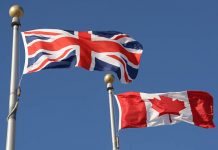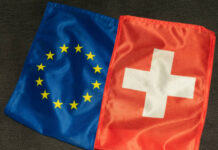Markets
As was the case over the previous days, markets are still looking for the right balance/speed with respect to reflation trade. Recent sharp repositioning on bond and commodity markets earlier this week caused some nervousness on parts of the equity market. Fed Chair Powell yesterday reiterated that the Fed won’t taper its ample monetary policy support any time soon. Markets also found some comfort as the Fed president considered the recent rise in yields as a vote of confidence on better times ahead. US equities took Powell’s message on the positive side and reversed substantial intraday losses yesterday. Markets in Asia this morning were not fully convinced, but sentiment gradually improved during the European session. European equities gained 0.25%/0.50% on average before the open of the US markets. Eco data were few. German Q4 GDP was upwardly revised to 0.3% Q/Q and -2.7% Y/Y (from 0.1% Q/Q and -2.9% Y/Y). The revision conforms that the (German) economy was more resilient than initially feared. Maybe this also gave some comfort to European investors. However, the hope on a GRADUAL resumption of the reflation trade is again in jeopardy as US traders rejoined the fray. Without news, the sell-off in US bond markets resumed with vigor. The US yield curve again steepens sharply with yields rising between 1.6 bps (2-y) and 10 bps (30-y). The 10 and 30-y yields touched new post-corona highs respectively at 1.43% and 2.29% respectively. European yields opened slightly lower this morning but currently feel spill-over effects from the US bond market sell-off. German yields are rising up to 4.0 bps (30-y). For now, the impact of rising core yields on intra-EMU spreads remains modest. 10-y yield spread changes versus Germany widen 1-2 bps, with Greece slightly underperforming (+5 bps). The sharp rise in US yields also reversed a constructive start of US equity futures. US cash indices opened with modest losses, with the Nasdaq most vulnerable (currently -0.8%).
Of late, the diffuse reflation narrative of better economic prospects, but at the same time higher US yields and some tentative signs of higher volatility kept most major USD cross rates (DXY, EUR/USD ) in a directionless trading pattern. Today, the sharp rise in US yields tilted the balance in favour of the dollar. Especially USD/JPY profited. The pair reversed most of this week’s correction again nearing the 106 barrier. The decline in EUR/USD is more modest, with the pair currently trading in the 1.2130 area. The TW dollar (DXY) rises to 90.30. However, the (indecisive) technical picture hasn’t changed at all. Sterling took a very strong start in Asia this morning. EUR/GBP even temporary dropped below the 0.8570 support, but for now the test is rejected. EUR/GBP currently again trades in the 0.86 area. Remarkably, the halt of the sterling rise occurs even as UK yields rise in a similar fashion as is the case in the US. Yesterday, the Swiss franc was a next ‘victim’ of the global inflation narrative, with EUR/CHF jumping above the 1.10 barrier. The franc today losses modest further ground with EUR/CHF changing hands in the 1.1020 area.
News Headlines
South African finance minister Mboweni laid out the details of the 2021 budget for the next fiscal year through March. He backtracked on a planned tax increase and instead announced a tax relief for individuals as well as a 1 ppt cut in corporate taxes to 27% from April 2022 to bolster both consumption and investment. Revenues are seen some 100 billion rand higher, which reduces the budget deficit to a still-record 14% from 15.7%. Debt will peak in 2026 at a lower-than-earlier-forecasted 88.9%. The South African rand temporarily strengthened below USD/ZAR 14.5.
Germany’s DIW said the economy could shrink by around 1.5% in early 2021. The Institute for Economic Research is referring to the lockdown measures taking a toll on growth even though the impact was most likely less severe than in last spring. The industry has come through the winter quite robustly, it added, as export remained strong and construction solid.











